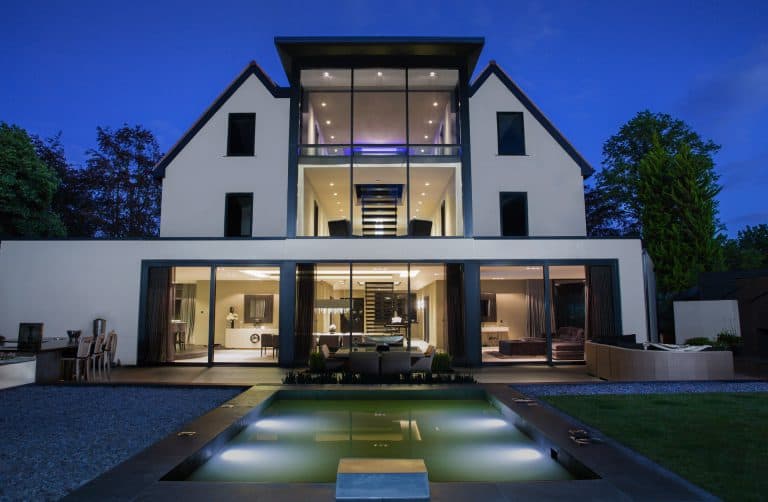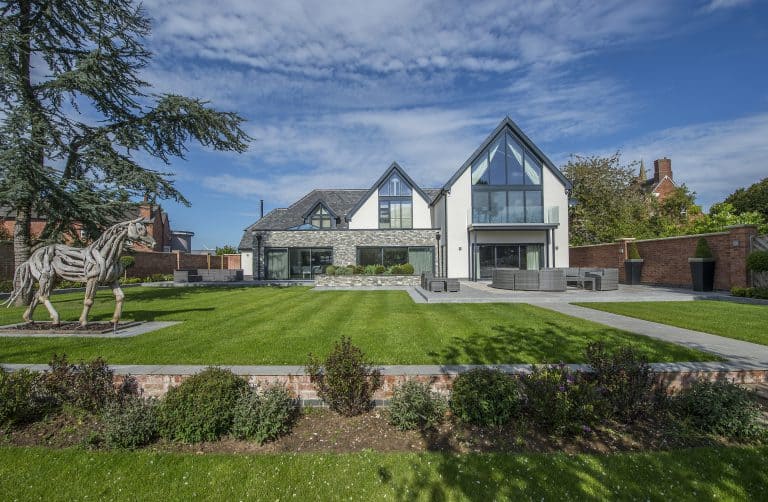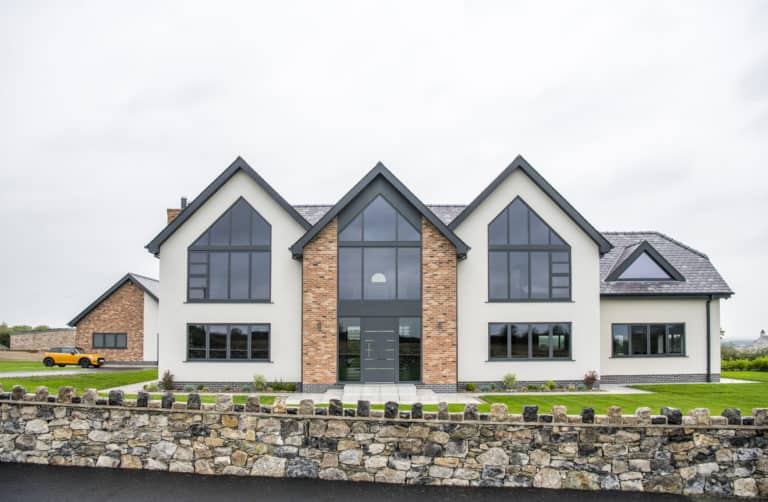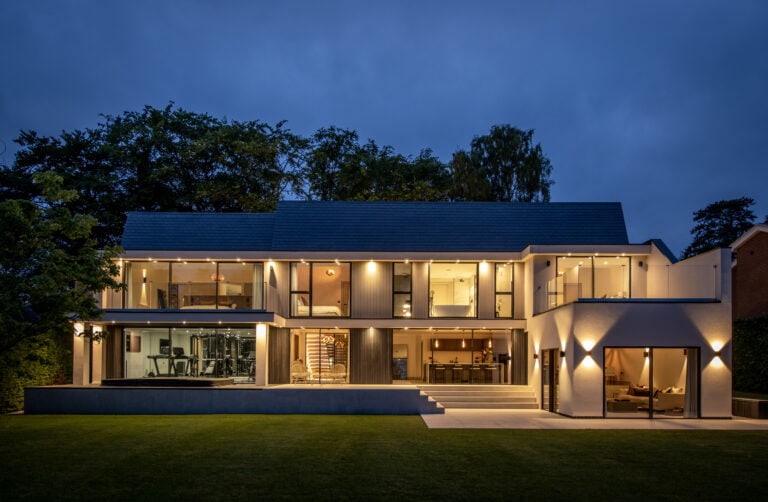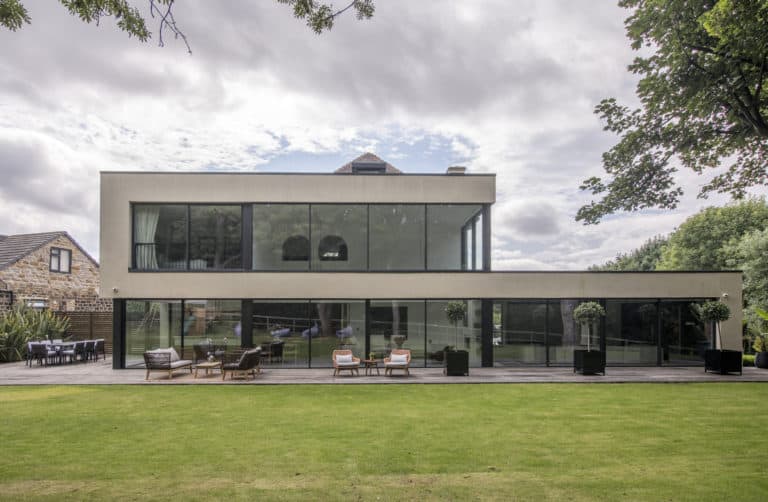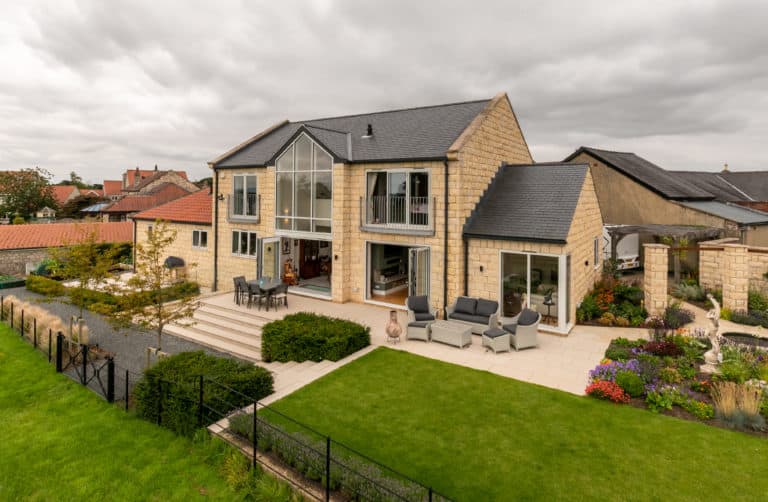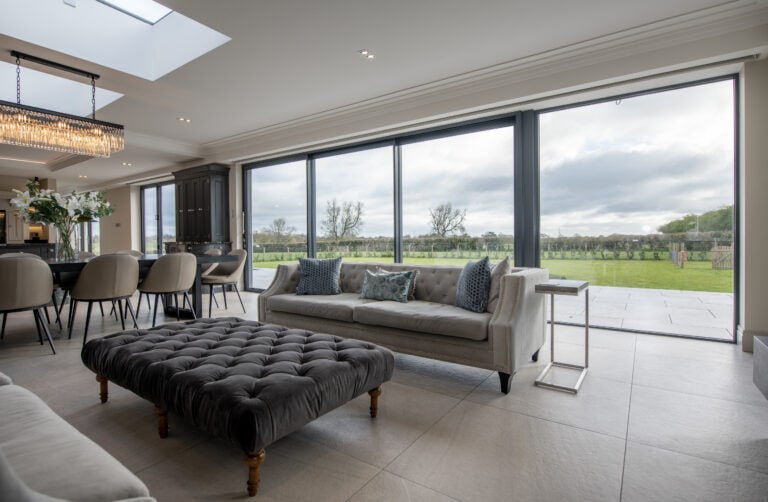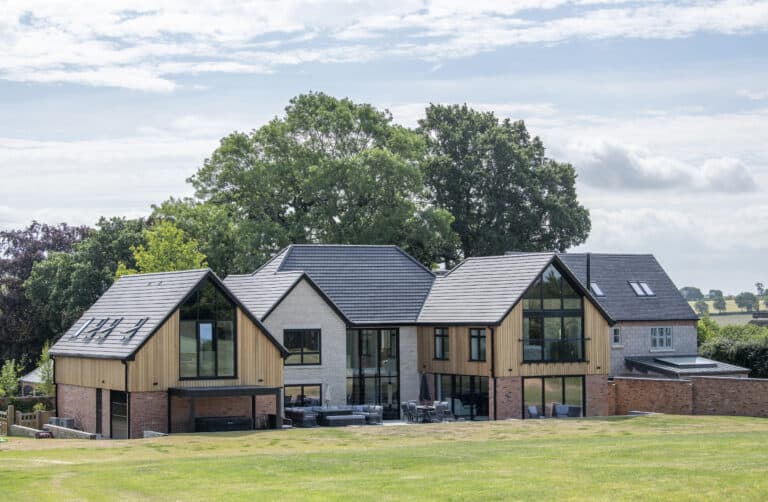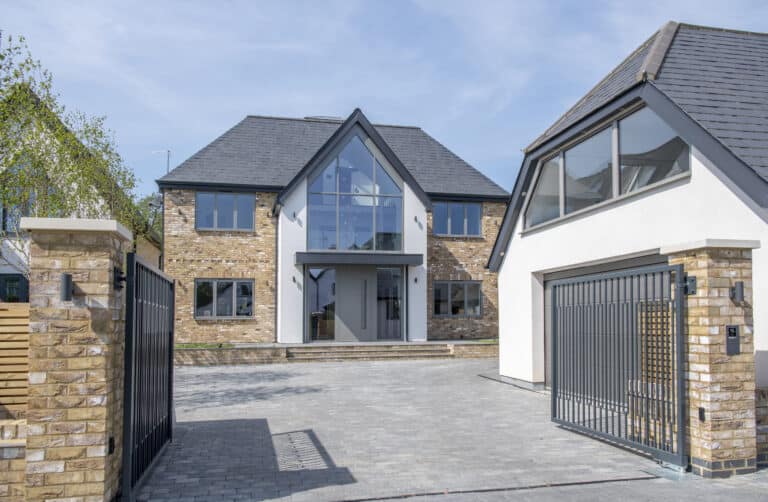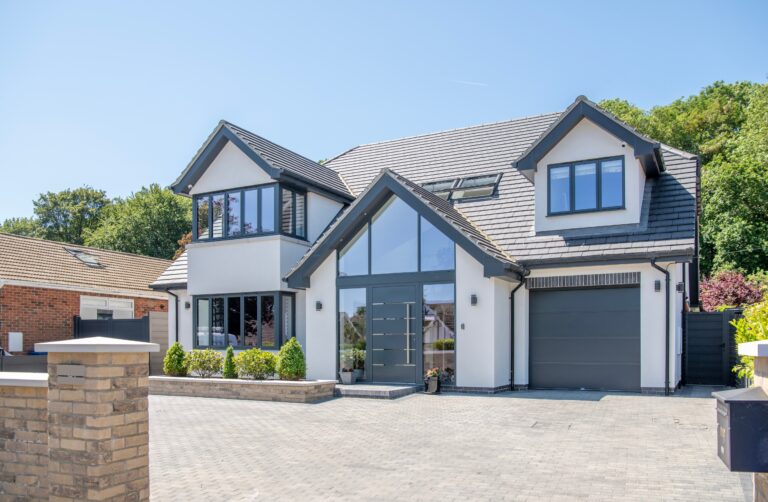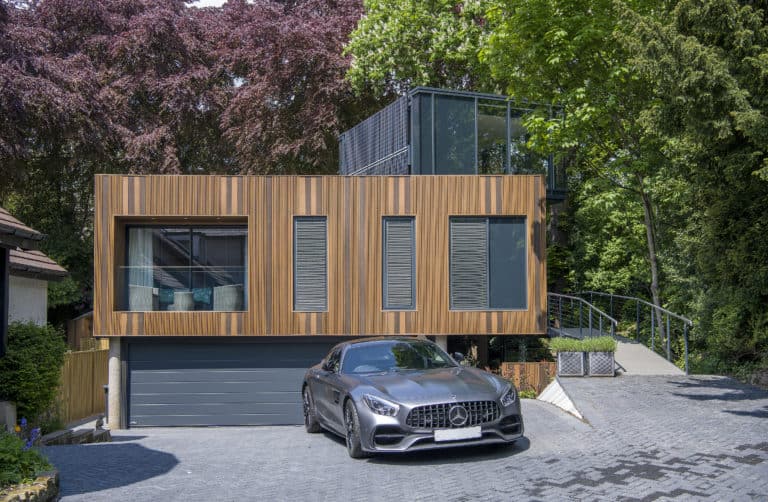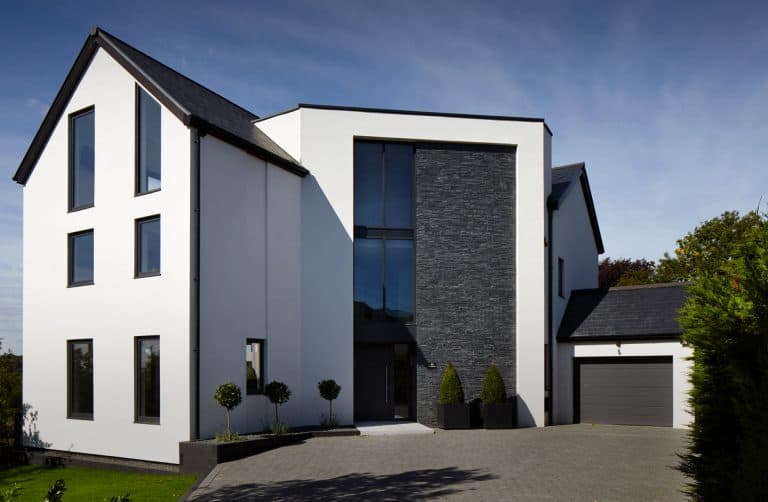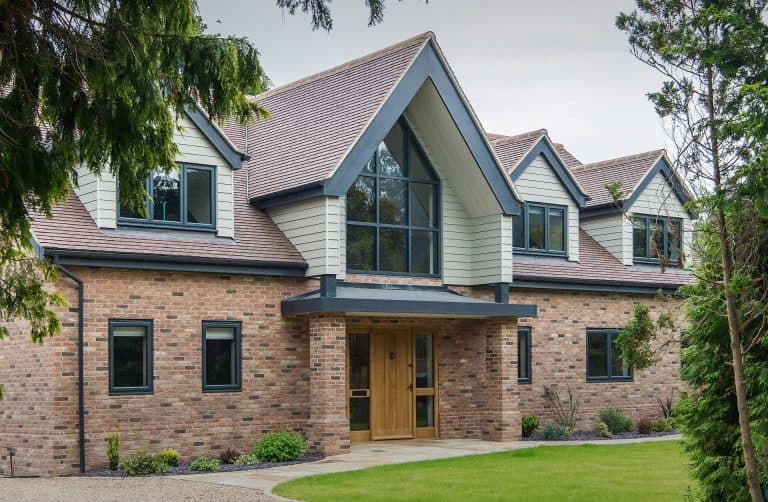What is a curtain wall
When it comes to modern and contemporary home designs, it’s becoming more and more common for architects and homeowners alike to install distinctive feature pieces into their properties. And nowhere is this more obvious than with the rising trend of installing huge sheets of aluminium curtain wall systems into domestic buildings.
Designed to provide a distinct and unique protective façade for the building, while still offering amazing views, there are many reasons why curtain wall systems are rising in popularity.
So, with that in mind, we’re going to break down exactly what curtain walling is, the different curtain wall types and systems available, its pros and cons, and why you might choose curtain walling over other aluminium window options – all so you can decide if this sort of feature is suited to your home’s aesthetic.
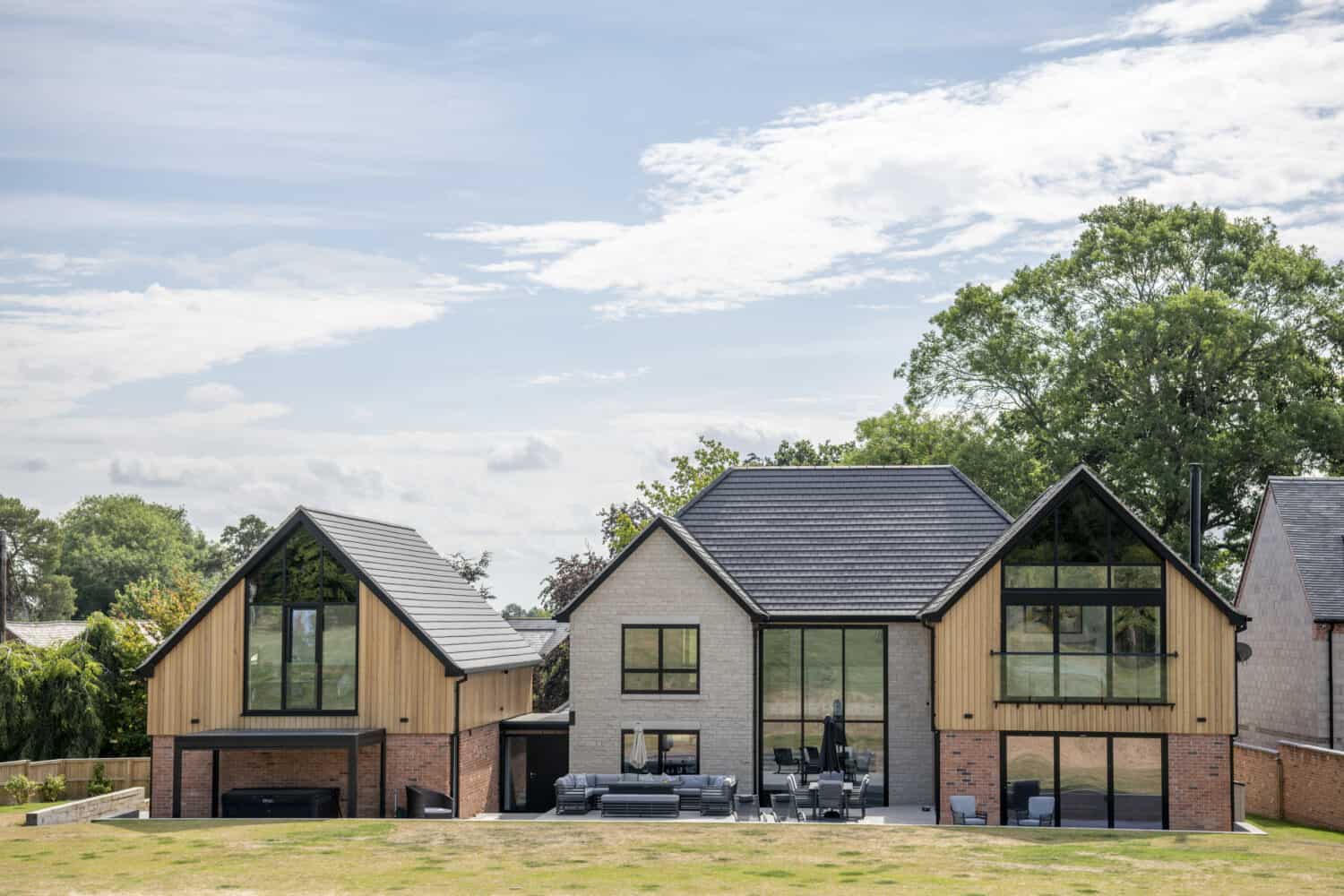
What is curtain wall glazing?
Despite its increased prevalence in commercial and domestic buildings alike, the question ‘What is curtain walling’ remains a common one – and it’s true that the name alone does not necessarily provide a clear definition of the product.
In their simplest form, curtain wall systems are essentially sheets of glass that provide a second layer of cover to the outer wall of your home, without sacrificing incoming light or a building’s stability. In other words, they form a protective curtain against the elements but retain all the functionality of a large window.
Large expanses of glass that are not structural
This outer layer may be fully sealed, or it might be partially sealed to allow for drainage of water, but either way, the curtain itself will ensure that your interior wall or windows will experience minimal weather exposure over the course of its installation.
On top of this, curtain wall systems are what’s known as non-loading-bearing features, meaning they do not have to support the weight of the structure they’re attached to. This allows the use of lightweight materials in their construction, which reduces overall costs while allowing for unique placements and designs of glazed curtains around the home.
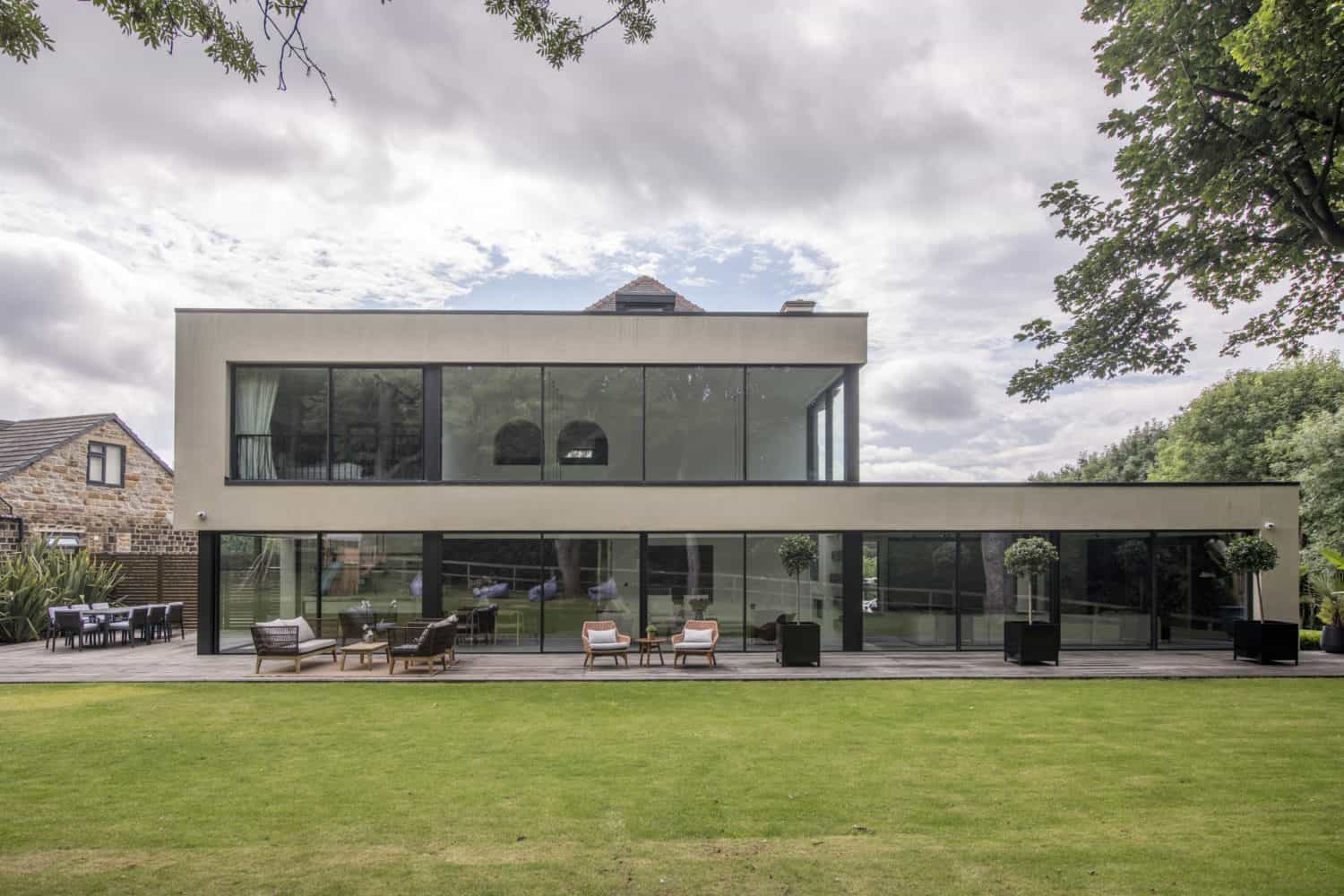
What are the different curtain wall types?
So, now that you know what curtain walling is, what are the different curtain wall types that are available for installation? For simplicity’s sake, we’re going to stick to the two most common formats used in its production- the stick and unitised construction systems:
- The Stick System – with the stick system, your curtain wall is installed piece by piece, on-site, by your chosen installer.
- The Unitised System – with the unitised system, your curtain wall is prefabricated in large panels in a dedicated manufacturing facility before being transported to the site and installed. This is more common in large commercial projects such as high rise office blocks.
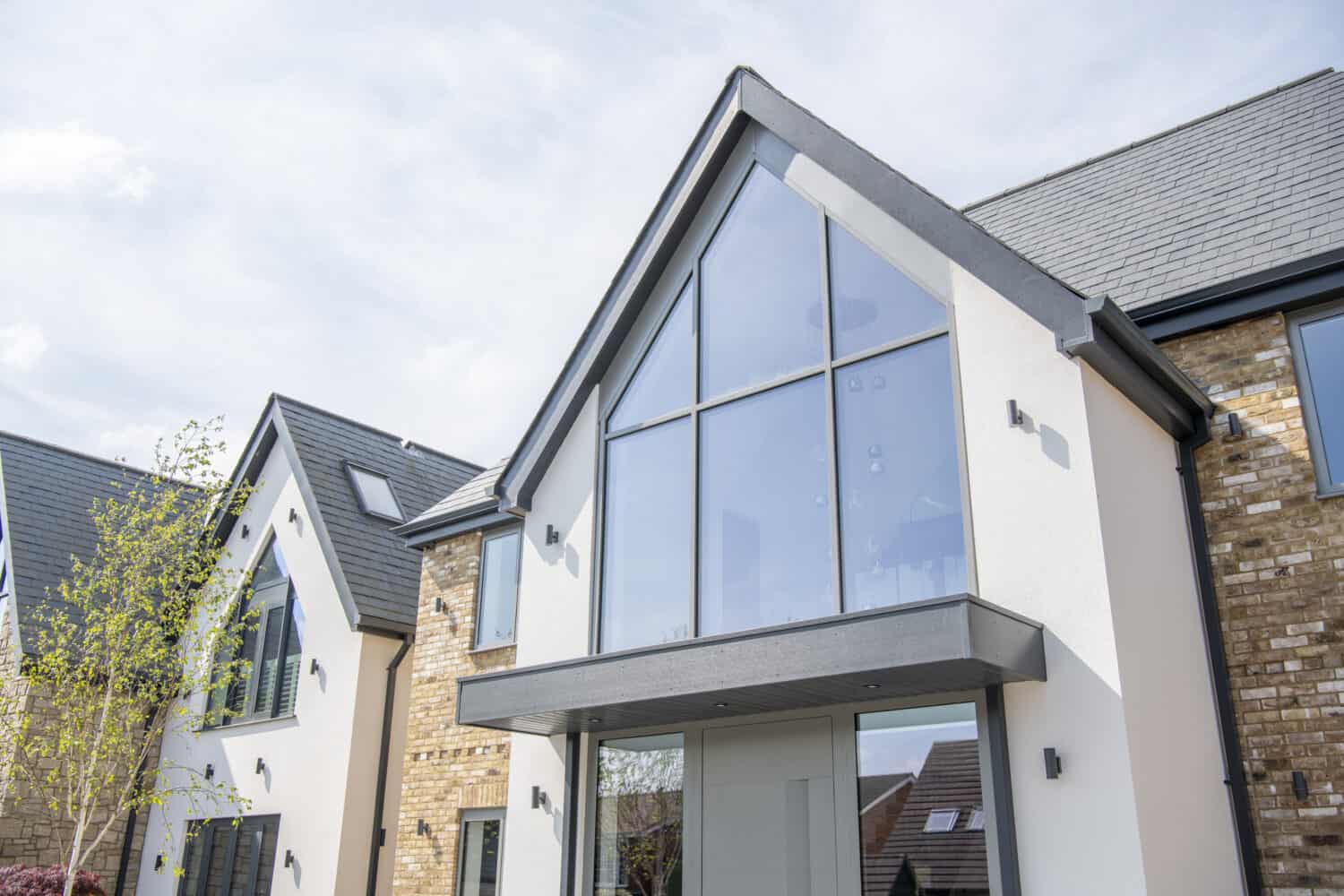
The stick system is more suited to residential projects
Which method is used to build your glass curtain will be up to your installer, and both curtain wall types offer the same degree of protective value you’d expect from such a product. The stick system is more suited to residential properties because generally they require smaller but more bespoke glazed screens, often in angled shapes and with high-end doors and windows installed within them.
What are the different curtain wall systems?
Although there are only two types of curtain walling used in domestic installation, there are in fact 3 different types of curtain walling systems you could choose to use, each offering a different level of protection from certain outside elements:
- Fully Sealed – with a fully sealed curtain, the glazing and outer wall are entirely sealed and protected from any external weather effects.
- Water Managed – with a water-managed curtain, the glazing is sealed to protect against wind and debris but still allows water in, which is then quickly drained at the base.
- Pressure Equalised – with a pressure-equalised curtain, the curtain still allows water to be drained but keeps the interior of the space airtight while providing equal pressure between the inside and outside.
With this info in mind, you might be curious as to why all curtain walling is not fully sealed, and the answer to this is that the level of sealing you might require will depend on your project needs and budget.
It goes without saying that a fully sealed curtain costs far more than a partially sealed one, and unless your curtain is directly protecting the interior of your home, you likely won’t need to invest in that level of protective glazing.
What type of glass is used in curtain walling?
Here at Express, we offer three different types of glazing that you can choose to have installed in your aluminium curtain walling, each of which offers different benefits:
- Advanced – our standard double-glazing option, our advanced glass has unique low-emission properties thanks to its interior metallic coating. This coating minimises the amount of heat that escapes your home while still allowing in the optimum amount of sunlight.
- Solar Control – our solar control glass offers the same benefits as our advanced glazing but with the added ability to regulate the level of light and heat entering a space. This in turn prevents a greenhouse effect from happening due to the heat retention offered by multiple glass layers.
- Shield – our shield panes are the toughest type of glass we offer, both in terms of physical strength and UV protection. It has both anti-shatter properties and UV protection, ensuring your home’s entire interior is protected.
As with all of the bespoke glass solutions we offer, aluminium curtain walling comes with a wide variety of benefits that might make it an optimal feature to include in your home.
What are the drawbacks of curtain walling?
As you can see, there are plenty of benefits to picking curtain wailing for your home, but that’s not to say that there are no drawbacks to installing this sort of feature in your property.
For one thing, curtain wall does cost a lot more to manufacture and install than other window products due to their size and complexity, so they’re not suited for those on a smaller budget.
Due to the size of aluminium curtain walling much of the installation often takes place at height, which will require scaffolding, this again adds to the cost of installing the product, and if really large glass units are involved specialist lifting requirement may be required.
Finally, curtain walling is deemed a commercial product that when installed doesn’t get checked or examined in the same way it does when installed into someone’s home. It is quite rare to find a Company who can install this specialist product to a standard that is acceptable for a luxury home. It is therefore very important to choose the right Company to install curtain-walling because not only does it need to be manufactured and installed properly but it needs to be guaranteed for a long period of time because any issues or leaks will again require scaffolding and lifting equipment to resolve any issues safely.
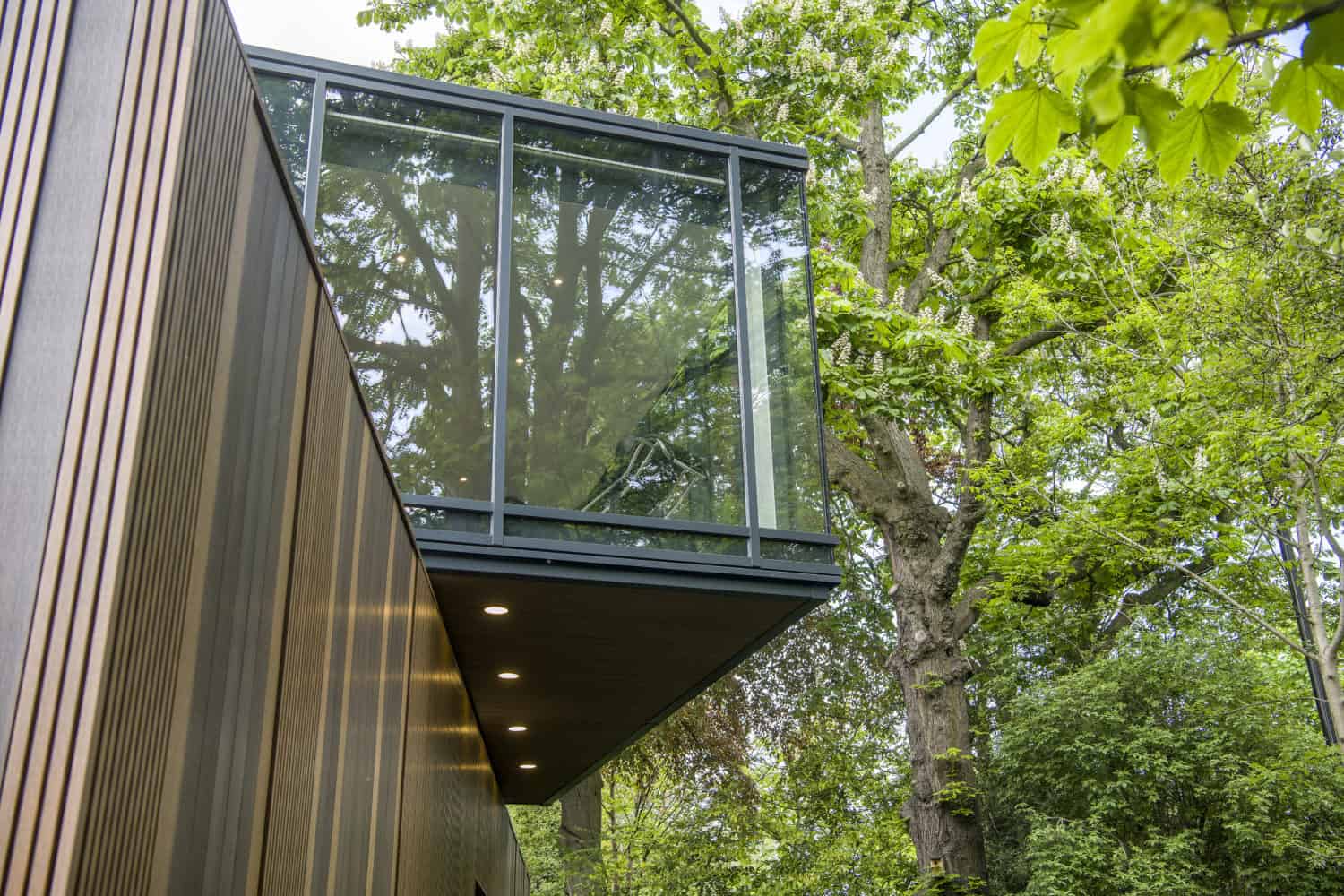
Check out our curtain-wall installations
So, with that cautionary last point out of the way, you should have all the information you need to make an informed decision on whether or not you want curtain walling installed in your home. You can see various examples of curtain-wall throughout our website as it is often used in entrance atriums and bespoke glass solutions, and we’ve used it many times to create some of our beautiful project case studies including one of our famous appearances on Grand Designs.
Of course, if you have more questions on this product, then you can reach out to the Express team today or download our free brochure for more exact details on each of our products. Our team of experts will be happy to help bring your dream project to life and don’t forget to visit our blog for more informative articles like this one.
